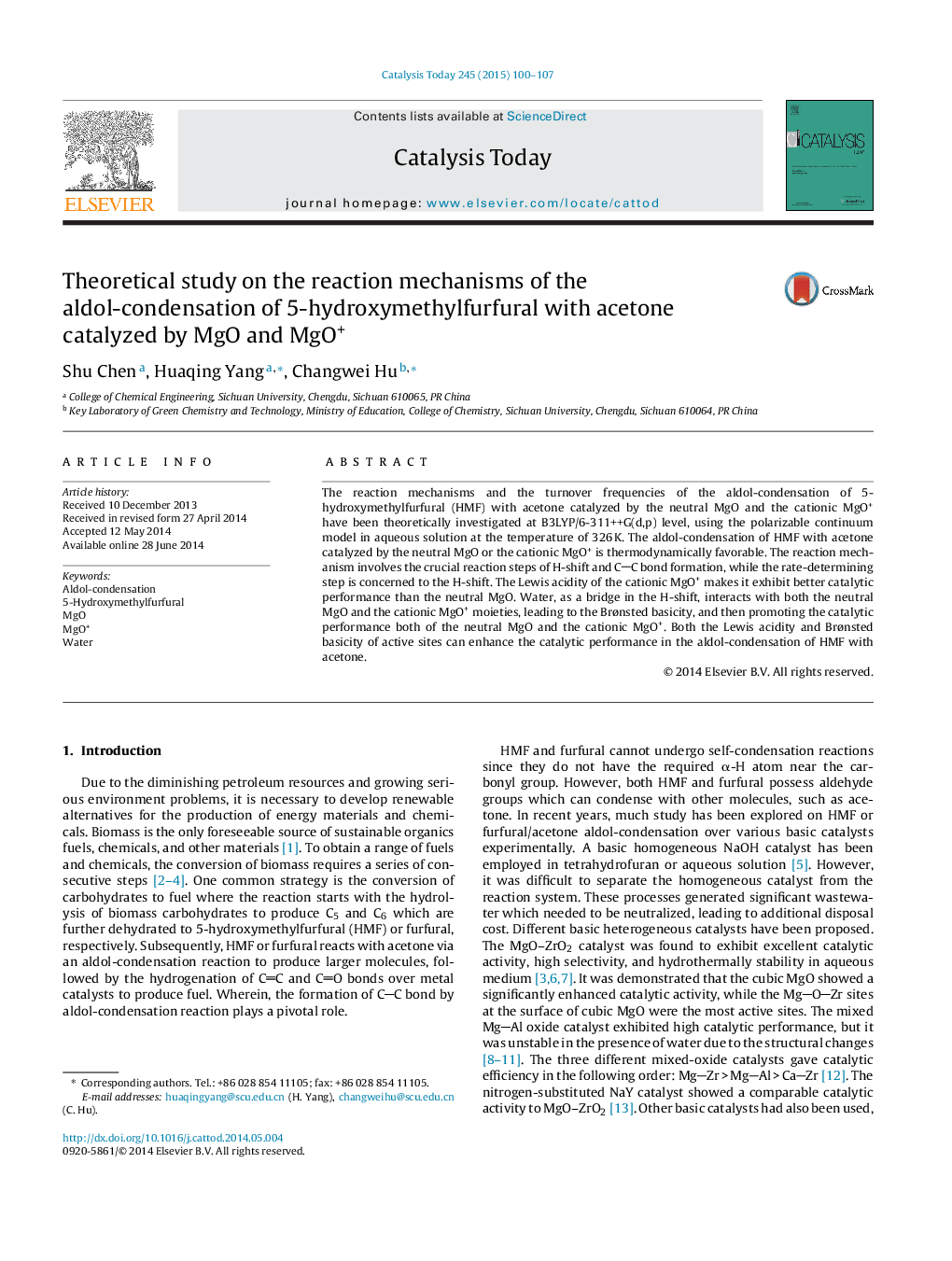| Article ID | Journal | Published Year | Pages | File Type |
|---|---|---|---|---|
| 54046 | Catalysis Today | 2015 | 8 Pages |
•The reaction mechanism involves the crucial reaction steps of H-shift and CC bond formation.•The rate-determining step is concerning to the H-shift.•Water serves as a bridge in the H-shift reaction step.•MgO+ exhibits better catalytic performance than MgO.•Both the Lewis acidity and Brønsted basicity of active sites are beneficial.
The reaction mechanisms and the turnover frequencies of the aldol-condensation of 5-hydroxymethylfurfural (HMF) with acetone catalyzed by the neutral MgO and the cationic MgO+ have been theoretically investigated at B3LYP/6-311++G(d,p) level, using the polarizable continuum model in aqueous solution at the temperature of 326 K. The aldol-condensation of HMF with acetone catalyzed by the neutral MgO or the cationic MgO+ is thermodynamically favorable. The reaction mechanism involves the crucial reaction steps of H-shift and CC bond formation, while the rate-determining step is concerned to the H-shift. The Lewis acidity of the cationic MgO+ makes it exhibit better catalytic performance than the neutral MgO. Water, as a bridge in the H-shift, interacts with both the neutral MgO and the cationic MgO+ moieties, leading to the Brønsted basicity, and then promoting the catalytic performance both of the neutral MgO and the cationic MgO+. Both the Lewis acidity and Brønsted basicity of active sites can enhance the catalytic performance in the aldol-condensation of HMF with acetone.
Graphical abstractFigure optionsDownload full-size imageDownload high-quality image (135 K)Download as PowerPoint slide
